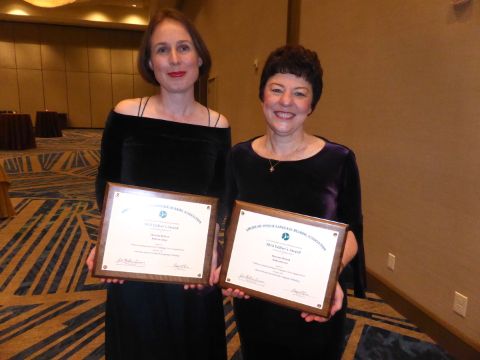Children are missing out because of a lack of support for communication, experts say

Two leading experts have argued that many children with communication needs are not receiving the support they need, with a nationwide shortage of speech pathologists causing long waiting times and many children – including those with National Disability Insurance Scheme (NDIS) funding – to miss out.
Dr Sarah Verdon, Head of Speech Pathology at Charles Sturt University, and Dr Kate Crowe, Postdoctoral Researcher at the University of Iceland and Adjunct Research Fellow at Charles Sturt recently spoke out about the issue, noting that while the $204.6 million Budget boost to extend Medicare-subsidised telehealth services until 31 December should be a huge relief for many parents in need speech pathology services, the situation “is not that simple, particularly for parents in rural and regional areas.”
Wait lists and wait times to see a speech pathologist, even for a telehealth consult, continue to grow, with added concerns about children who need the kind of care which cannot be undertaken via telehealth consults.
With around 25 per cent of Australian parents concerned about their children’s speech and communication development, demand for speech and language support services are unlikely to dissipate any time soon.
While not all of these children will have a communication disorder or need speech pathology services (speech therapy), for those that do, the pathway to accessing support services, especially for those in rural and regional Australia, can be particularly difficult. In some cases, it is almost impossible.
Communication difficulties can take many forms and can have a number of consequences. Immediate consequences can be difficulty understanding parents or teachers. Longer-term consequences can include poor self-esteem, leaving school early, and an increased likelihood of involvement in the juvenile justice system.
However, if communication difficulties are identified early, speech pathology can be extremely successful in reducing both immediate and long-term negative impacts. While speech pathology services are available for free in Australia, many barriers exist to families actually being able to access these services.
First, there are state-by-state differences in how services are provided, with the practicalities boiling down to where children get the service, how much service they are entitled to, and who pays for the service.
In NSW, state-employed speech pathologists work within the health system, working in hospitals and community health centres. In Queensland, they work within both the health and the education systems, meaning that children may receive speech pathology at school. When speech pathology services are not available in schools, like in NSW, families must often seek out services independently. One barrier to this is the lack of availability of these services and this is a particular issue in regional and remote Australia.
A study Dr Verdon was involved in found that the critical maximum distance families were willing and able to travel to access speech pathology services was 50 kilometres, and alarmingly, only 1.4 per cent of localities in non-metropolitan areas had a service available within this distance.
If a family is lucky enough to have a service available within a reasonable distance, the next barrier they face is long waiting lists. A recent study found that some families wait up to 20 months to receive an assessment of their child’s communication and then may wait a further 20 months to begin speech pathology. Considering how important early intervention is, this wasted time significantly impacts upon the progress and life experiences of children and families waiting for services, researchers said.
One way that families may overcome these barriers is to pay for private speech pathology. But, at the current rate of more than $190 per hour, this option – if it even is an option for those in rural and regional areas – is out of reach to the vast majority of families whose children need to access these services regularly in order for them to be effective.
These barriers have led to families taking extreme measures to seek support for their children, including moving interstate. They also highlight the equity issue that exists for families in non-metropolitan areas and families who do not have the means to relocate or pay for private services.
The advent of the NDIS has provided some reprieve for families by covering the costs of speech pathology for children who qualify for this funding. However, this too is not without its challenges.
First, many communication needs, such as speech sound disorders and developmental language disorders – which affect more than seven per cent of Australian children – are not covered by the NDIS.
Second, the increase in children who have funding for speech pathology services has led to a huge demand for already overrun services. This has resulted in many children with NDIS plans still not receiving services, and their NDIS funds unable to be spent.
For those early childhood education and care (ECEC) services who are wanting to better support children with communication needs and their families, researchers suggest the following resources:
- Speech Pathology Australia provides resources explaining communication development and difficulties and Communication Milestone Posters that parents and educators can use to check if a child is on track with their communication development.
- Information about how to communicate in a more inclusive way
- There are podcasts about communication difficulties in children, such as Dr Verdon’s The Talking Children Podcast and The Talking DLD podcast
- Find out more about the most common communication disorders experienced by children Developmental Language Disorder and Speech Sound Disorder
- Learn how to support Multilingual children’s speech and bilingual language development.
Further information and insights from Dr Verdon and Dr Crowe can be heard in episode one of the Charles Sturt alumni podcast series.
Popular

Practice
Provider
Quality
Research
Workforce
New activity booklet supports everyday conversations to keep children safe
2025-07-10 09:00:16
by Fiona Alston

Quality
Practice
Provider
Workforce
Reclaiming Joy: Why connection, curiosity and care still matter in early childhood education
2025-07-09 10:00:07
by Fiona Alston

Policy
Practice
Provider
Quality
Research
Workforce
Beyond the headlines: celebrating educators and the power of positive relationships in early learning
2025-07-07 10:00:24
by Fiona Alston













